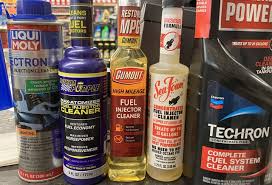Can You Clean A Transmission Filter?

The transmission filter plays a critical role in your vehicle’s transmission system by filtering out dirt, debris, and other contaminants that can damage the transmission. Over time, the filter can become clogged, reducing its effectiveness and potentially leading to transmission issues. This leads many car owners to wonder, “Can you clean a transmission filter?” While it may be tempting to clean the filter yourself, there are a few important considerations to keep in mind. Let’s explore the topic and help you understand whether cleaning your transmission filter is a viable option.
What Does a Transmission Filter Do?
The transmission filter is designed to keep your vehicle’s transmission fluid clean by trapping contaminants and debris before they can circulate through the transmission system. This helps maintain smooth operation and prevents excessive wear on the internal components of the transmission. A clean filter allows the fluid to flow freely, ensuring that your transmission operates at optimal performance.
Can You Clean a Transmission Filter?
While some people might be tempted to clean a transmission filter, it’s generally not recommended. Transmission filters are typically designed to be replaced rather than cleaned. Here’s why:
1. Filter Design and Material
Most transmission filters are made from paper or mesh material, which can become damaged during the cleaning process. The cleaning chemicals or solvents used to clean the filter could degrade the filter material, causing it to become less effective or even fail entirely. This means that cleaning the filter could lead to transmission problems down the line.
2. Clogging and Wear
Transmission filters are designed to trap a certain amount of dirt and debris before they need to be replaced. Over time, the filter will naturally become clogged with contaminants, and cleaning it won’t restore it to its original condition. A clogged or worn filter can significantly reduce the flow of transmission fluid, affecting the performance of the transmission.
3. Risk of Contamination
Even if you clean the filter, there’s a risk that you could introduce contaminants back into the transmission system. Residual dirt or cleaning agents could enter the system, potentially causing more harm than good.
4. Proper Function of the Filter
Transmission filters are engineered to perform at a specific capacity. Once a filter has been used for a while, it’s important to replace it, as cleaning it might not restore its original filtering efficiency. Over time, the filter’s performance will deteriorate even if it’s cleaned.
When Should You Replace the Transmission Filter?
Instead of attempting to clean the filter, it’s generally a better idea to replace it when necessary. Most manufacturers recommend replacing the transmission filter every 30,000 to 60,000 miles, though this can vary depending on the vehicle make and model. Here are some signs that you may need to replace the transmission filter:
1. Slipping Gears
If the transmission starts slipping, where the gears unexpectedly pop out of place or the car hesitates to engage a gear, it could be a sign that the filter is clogged.
2. Delayed or Rough Shifting
If you notice delayed or rough shifting, especially when the transmission is in lower gears, it may be due to a clogged or dirty filter that is restricting fluid flow.
3. Transmission Overheating
A dirty transmission filter can cause a decrease in fluid flow, leading to the transmission overheating. If your transmission overheats, it could result in serious damage.
4. Grinding or Unusual Noises
Unusual noises, such as grinding or whining, can be a sign of a problem with the transmission. A clogged filter could be restricting fluid flow and causing damage to the transmission’s internal components.
How to Replace a Transmission Filter
If you’ve decided to replace your transmission filter, here’s a general guide to help you through the process:
1. Prepare Your Tools
You’ll need a few essential tools, including:
- A transmission filter kit (which includes the filter and gasket)
- Transmission fluid
- Socket wrench and screwdrivers
- Drain pan to catch the old fluid
- Jack and jack stands for lifting the car
- Gloves and safety glasses
2. Lift the Vehicle
Use a jack to lift the car and secure it with jack stands. Ensure the vehicle is on a level surface for safety and stability.
3. Drain the Transmission Fluid
Before removing the filter, you’ll need to drain the transmission fluid. Use a drain pan to collect the fluid from the transmission pan. Be cautious, as the fluid might be hot.
4. Remove the Transmission Pan
Use a socket wrench to remove the bolts securing the transmission pan. Once the pan is removed, allow any remaining fluid to drain out.
5. Replace the Filter
Once the pan is removed, you should be able to access the transmission filter. Remove the old filter and replace it with a new one. Make sure the filter is properly seated.
6. Install a New Gasket
If the gasket is worn, replace it with a new one to ensure a proper seal when reattaching the transmission pan.
7. Reinstall the Pan and Refill Fluid
Once the filter is replaced and the gasket is in place, reinstall the transmission pan and secure it with the bolts. Refill the transmission with the recommended fluid and check the fluid level.
8. Test the Transmission
Start the engine and let it idle. Shift through the gears to ensure the transmission is working smoothly. Check for leaks around the pan and filter.
Conclusion
In conclusion, you should not clean a transmission filter. While it might be tempting to try cleaning it to save money, the risks outweigh the benefits. The best course of action is to replace the transmission filter when needed to ensure optimal performance of your transmission system. If you’re unsure about the condition of your transmission filter, it’s always a good idea to consult a professional mechanic for guidance. Proper maintenance, including regular filter replacement, will help extend the life of your transmission and keep your vehicle running smoothly.





